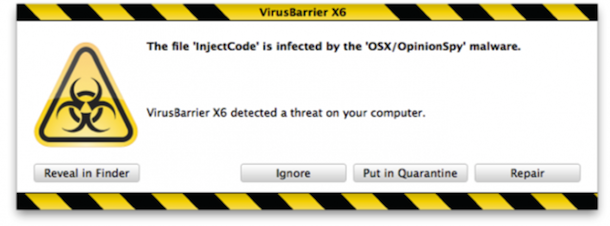How To Check Your Mac For Spyware
However, this argument is not a reason for avoiding an anti-virus solution for the following reasons: • The primary reason for using an anti-virus solution is to protect you from known threats. For example, many Mac OS X users regularly download shareware and freeware applications advertised on a variety of Web sites. However, these web sites do not vet the actual software you are downloading, i.e. The download could introduce malware or spyware. It would be very easy for a developer to create an innocuous or useful application and include a rootkit or Trojan in the installer package. Simple email clients for mac. If this is the case, and the installation requires that you provide your Admin password, the hidden malware would be installed along with the application, all without your knowledge. An anti-virus solution, such as Norton AntiVirus, will protect your Mac against such threats.
If you suspect a keylogger, but can't find anything in the Activity Monitor to indicate monitoring, check the connection between your keyboard and computer. If you see any extra fittings or hardware that doesn't belong, remove the device.  Software designed to hijack your A/V would likely be savvy enough to check whether kernel extensions or other software is also monitoring devices, and would try to disable or mislead them.
Software designed to hijack your A/V would likely be savvy enough to check whether kernel extensions or other software is also monitoring devices, and would try to disable or mislead them.
You can also choose the folder to save the photos backup. Best android phone.
But be aware that the Internet is riddled with potential threats to the security and well-being of your Mac or iOS device. No computer system is completely immune from possible attack, but Apple’s OS X (being Unix-based) is less vulnerable than most, particularly the latest versions from Lion onwards. The following seeks to offer some guidance on the main security threats and how to avoid them. If you have further questions please post in the forum appropriate to your particular hardware or operating system. There are many forms of ‘Malware’ that can affect a computer system, of which ‘a virus’ is but one type, ‘trojans’ another. Using the strict definition of a computer virus, no viruses that can attack OS X have so far been detected 'in the wild', i.e.
System damage: 28.1% - Immediate removal required! The immediate removal of the viruses is required to prevent further system damage, loss of Apps, Photos or other files. Traces of 1 phishing/spyware were found on your Mac with OS X 10.12.

The OverSight menu lets you know what it’s monitoring and what’s in use. Security researcher Patrick Wardle has a passel of free apps designed to help you protect your privacy and system integrity, and his will monitor not just for usage, but “piggybacking.” This is a technique seen in malware that can tap into a stream being used for FaceTime, Skype, or local recording, so the camera, mic, or both are already active when the surveillance starts. OverSight will pop up an Allow/Block warning with details about what triggered it. And a free version alerts you to use of your camera. A paid version ($30) adds microphone blocking, and its maker says it uses heuristics to identify likely unwanted audio and video uses. It’s hard to recommend one above another, except for cost, because until malware strikes (or you intentionally install a known example to test on an unpatched system), it’s impossible to predict whether one will perform better than another. OverSight can also warn you if an app tries to tap into an active audio or video stream.
Later versions are available. To automatically download updates in the future, choose Apple menu () > System Preferences, click App Store, then select ”Download newly available updates in the background.” Your Mac will notify you when updates are ready to install. * If you're using, get OS X updates by choosing Software Update from the Apple menu.
In this step, I show you how to remove the browser extension from Google Chrome and how to reset your homepage, new tab or search engine to one of your choice. Remove an adware browser extension from Google Chrome on Mac First, we need to remove any adware browser extension that might be installed in Google Chrome. Some extension prevents users from reverting the homepage, search engine or new tab as these extensions are controlling the homepage, new tab or search engine settings. Open Google Chrome, in the right top corner in Chrome, click on the three vertical dots (menu).